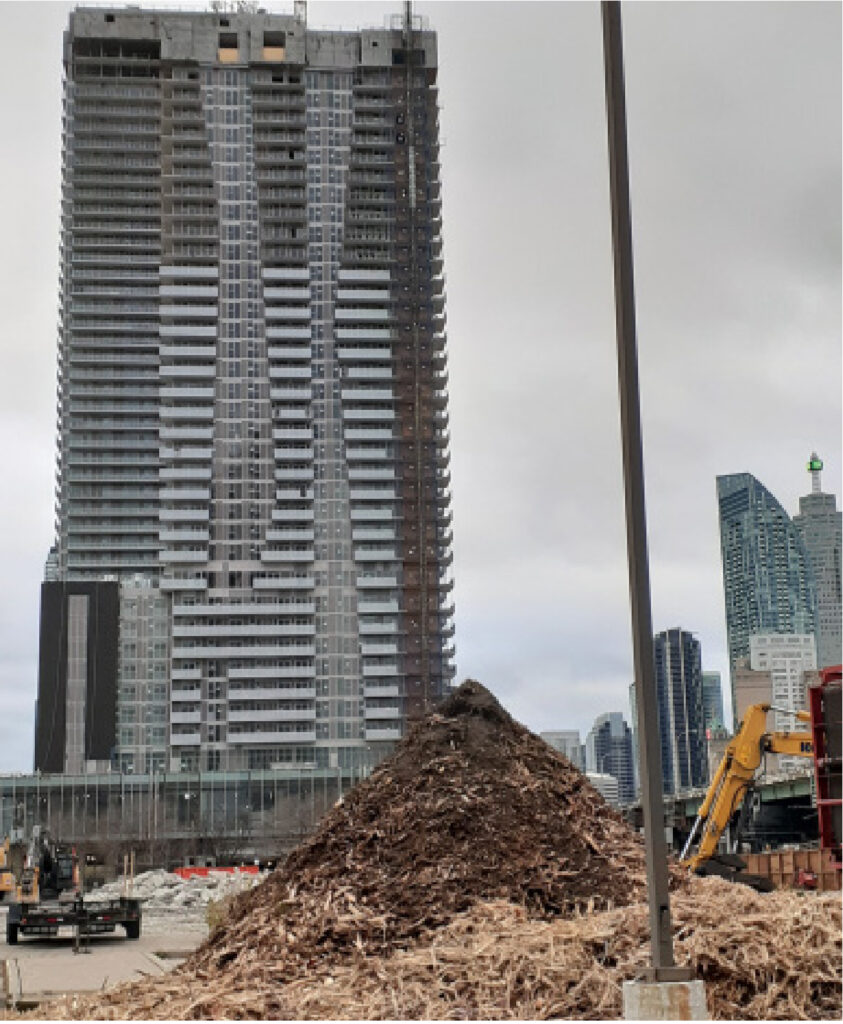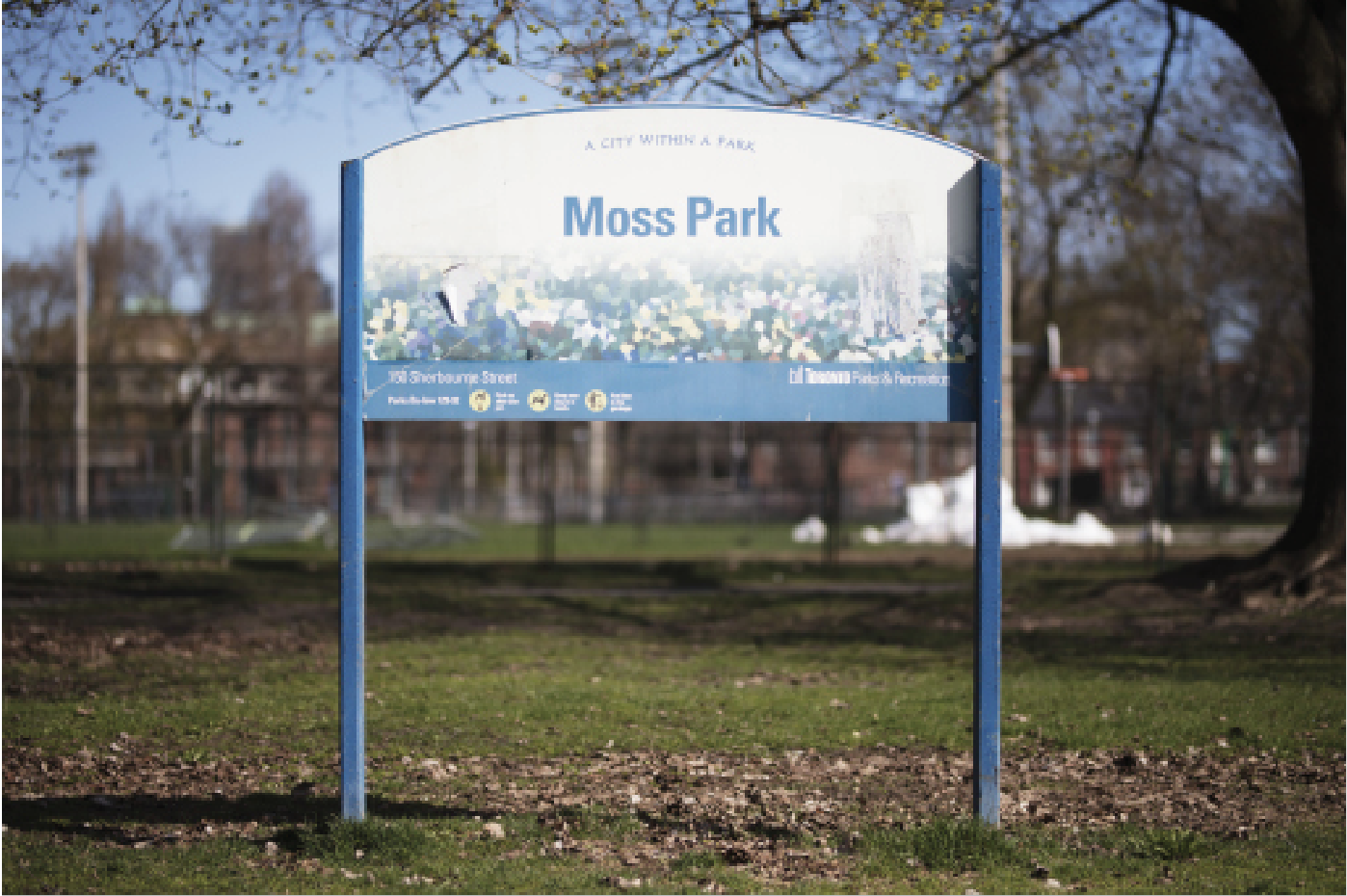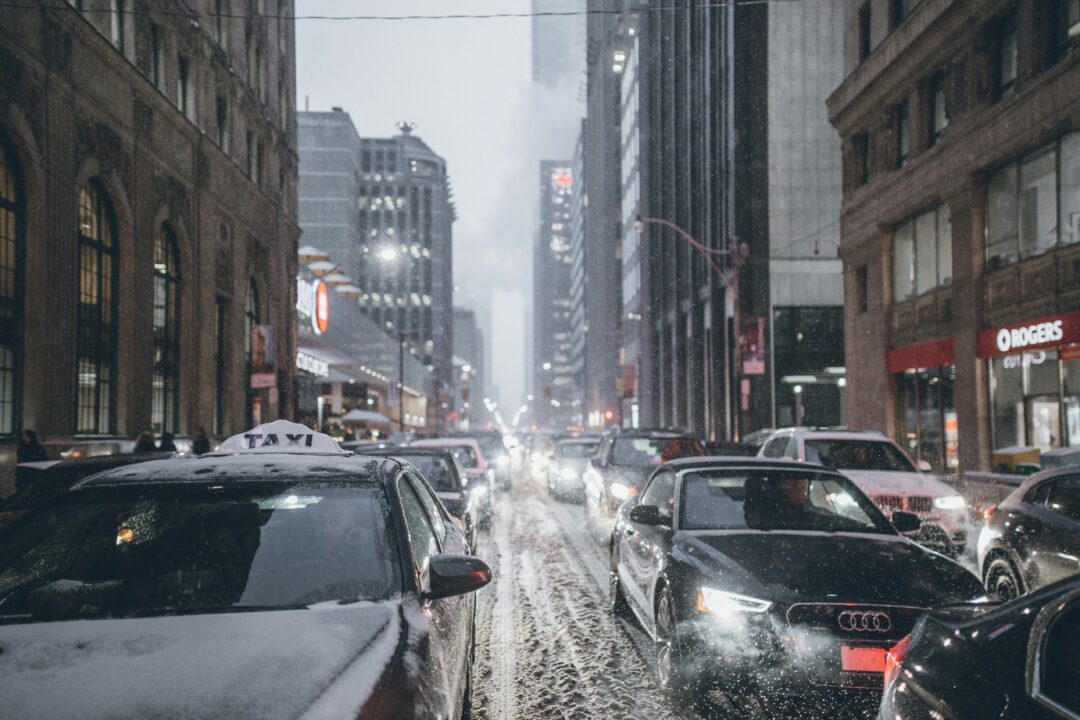By Rosemary Frei
Crombie Town residents are gasping after dozens more trees were cut down by a developer without clear information — until after they were felled — on whether or when they would be chopped down.
This contributes to the rapidly worsening air quality in the area, which has one of the highest concentrations of air-pollution sources in the city, and which also is located beside the high-profile Quayside site.
Months of pleas to the provincial environment ministry’s Air Quality Office to set up an air-quality-measurement station in the area — and to local MPP Chris Glover’s office to help push for this — have not succeeded. Instead, an official from the ministry indicated they had moved one such station to the vicinity of John and King streets, which is more than two kilometres west of Crombie Town.

Gary Wheeler, the media relations person for the provincial environment ministry, did not respond by deadline to a query from the bridge about why an air-quality monitoring station cannot be placed in Crombie Town.
More than 40 large maple and ash trees were toppled in the vicinity of the former FedEx building at Lake Shore Blvd. E. and Lower Sherbourne Ave. during the week of October 21 to prepare for a new development. An April 2019 city-commissioned arborist report stated all but three of the trees were in good health.
Ward 10 Councillor Joe Cressy’s office did not provide details about what would happen to the trees until one local – who’d been inquiring for weeks about the plan for them, without a clear response – contacted the office on Oct. 27 asking why the trees had been killed.
“The redevelopment of this site and removal of trees has fortunately been planned through a deliberate planning process that will provide an improved growing condition for new, healthier trees, as well as an improved streetscape and public realm,” Tom Davidson, Director, Waterfront Initiatives in Cressy’s office, responded in an Oct. 28 email.
The local resident, to whom the bridge granted anonymity to protect her from possible repercussions from speaking out, said this rings hollow.
“The city can request that the setback of grass and trees that FedEx had there [at the site] be maintained. Not doing so shows a real lack of concern for the present air quality.”
Longboat Ave. resident Mike Hutchinson added that the poor air quality is tangible.
“If you leave a window open you have to wipe the sill down, and then have to wipe it down again the next day,” he said. “And at certain times the smells are just as bad – like during the many months earlier this year when they were remediating the huge construction site at Front and Sherbourne, and people wearing white suits and respirators used foam to seal in the very unpleasant smells escaping from the soil.”
Another resident, to whom the bridge also granted anonymity to prevent repercussions, said a similar scenario has played out at every construction site in Crombie Town.
“Here we are in an area that’s seeing more vertical housing going up and our trees are going down,” said the woman, who reported having respiratory problems from the pollutants. “And we’ve had absolute roadblocks from Cressy [when trying to find out in advance whether the trees would be saved].”
There are many contributors to the high burden of fine particulate matter and other forms of air pollution in the area bounded by– clockwise from north to west — Front St., Parliament St., Queens Quay E. and Lower Sherbourne St. The main sources are: four lanes of traffic on Parliament and six lanes each on the Gardiner Expressway and Lake Shore Blvd. E.;
eight sets of GO train tracks between Longboat Ave. and Lake Shore, with another two to be added soon; eight active construction sites; and the first phase of the Gardiner rebuild, between Jarvis and Cherry streets.
A recent Toronto Star article detailed “potentially hazardous” effects on construction workers from the carcinogenic dust created when workers finish cement and grind, blast or chip concrete. Yet there is little study and public discussion about the health effects on people living near construction sites. There is even less consideration given to the additional consequences of a high volume of cars, trucks and diesel trains at their doorstep.
However, the provincial and municipal governments appear unwilling to address this in any way. Therefore, Crombie Town residents’ only recourse is to pay for air-quality monitoring themselves or find another way to have the pollution assessed.
Glover told the bridge another community group, the Bathurst Quay Neighbourhood Association, very recently found a University of Toronto researcher who is willing to study the air quality in their area, which is very close to the Billy Bishop Airport.




